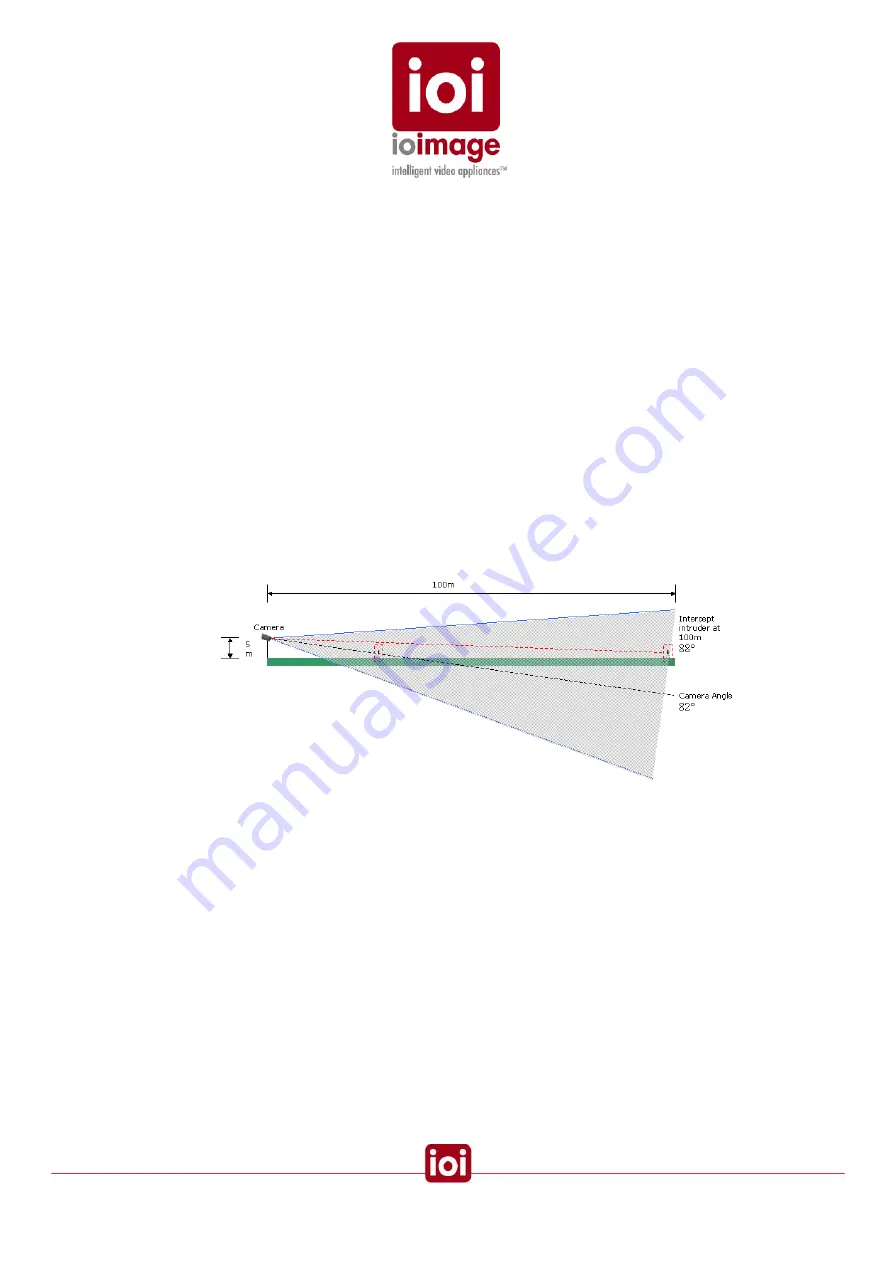
•
Camera height and angles:
o
For FOVs of depth where movement towards the camera is to be
detected, the camera angle and height should be adjusted based on the
FOV depth, topology/detection plane angle of intersect. In general,
greater heights with smaller inner (steeper) angles provide more
pronounced visualization of movement on the detection plane towards or
away from the camera. If to large of a camera angle (tilt approaching
parallel in relation to the detection plane) and low camera height are
used, visualization of movement towards or away from the camera will be
less pronounced. This may affect the speed of detection if an intruder
makes a precise foreword or away movement (no significant horizontal)
because the pixel distance translations will be more difficult to gauge.
One pixel change, in this situation, will be equivalent to a considerable
distance traveled. Wide-angle lenses will provide less depth capabilities
at distances, as the intruder will appear smaller at close to 90
°
(relation to
the primary detection plane).
o
The following image shows how from the camera’s point of view the angle
at which an intruder is viewed, becomes greater at a distance, and thus
quality of visible progression towards of away from the camera is less
pronounced.
The view nearer the camera is at a steeper angle and therefore the depth
more accurate (more pixels per movement at a set distance) in
determining depth movements towards or away from the camera. If a
camera is mounted at 90
°
to the detection plane, an approaching object
only grows in size but does not show movement in reference to the
detection plane.
•
Lighting
Issues
o
For scenes of depth, lighting should always be behind the camera and not
in the front. If the lighting is in front of the camera it may cause the auto
iris to automatically adjust to close light and this will reduce visibility at
depth where the light is not as strong.
o
Lighting (including infrared) should not be directed at the ground in front
of the camera but is preferential that it be projected near parallel to the
ground. This is because if the foreground is brightly lit the auto iris may
adjust and reduce visibility at depth where the light is not as strong.
53





























